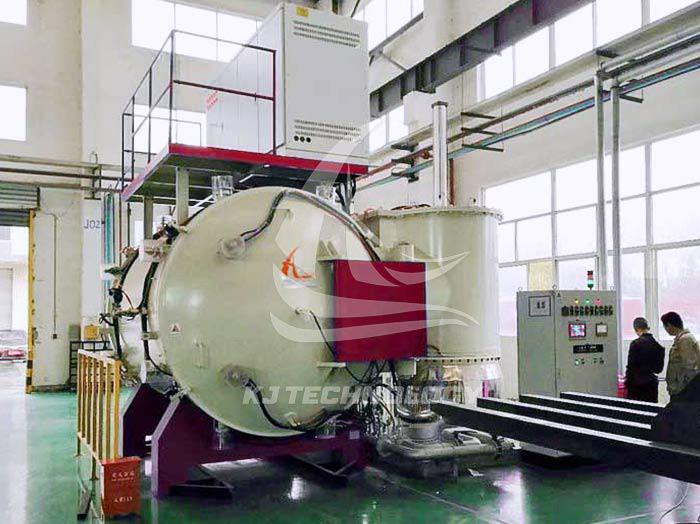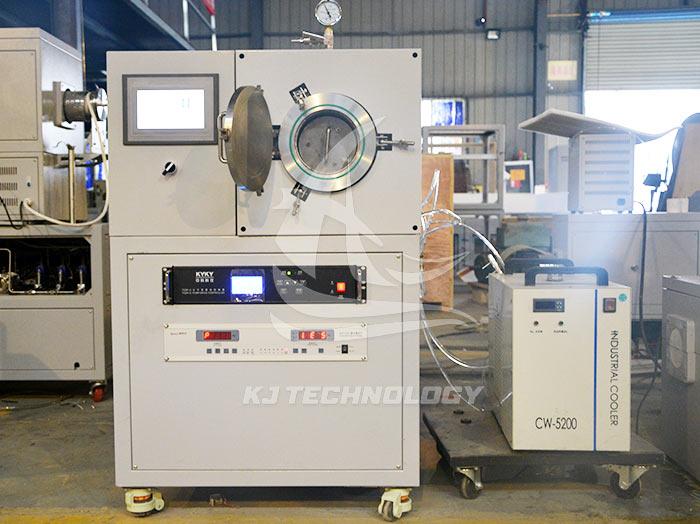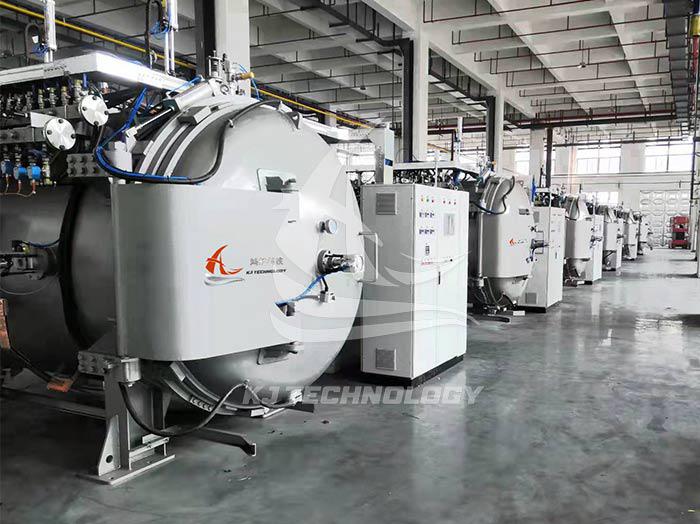Can diffusion welding vacuum furnace weld ceramics?
 08-18-2025 Author: KJ technology
08-18-2025 Author: KJ technology
The diffusion welding vacuum furnace can weld ceramics and has significant advantages in the field of ceramic welding. The specific analysis is as follows:
1. Feasibility of Ceramic Welding
The diffusion welding vacuum furnace can achieve high-strength connections between ceramics and metals, ceramics and ceramics through vacuum environment, high-temperature heating, and pressure control, especially suitable for the following scenarios:
Welding of Ceramics and Metals
Material combination: Aluminum oxide ceramics (Al ₂ O ∝), zirconium oxide ceramics (ZrO ₂), and metals such as copper, titanium, and Kovar alloy (Fe Ni Co).
Typical applications: electronic device packaging (such as ceramic metal vacuum sealing), aerospace hot end components (such as ceramic titanium alloy turbine blades), artificial joints (ceramic titanium alloy prostheses).
Technological advantages:
Vacuum environment eliminates oxide film, avoids solder contamination, and improves ceramic electrical insulation performance.
Atomic diffusion forms metallurgical bonding, and the joint strength is close to that of the base material (with a tensile strength of over 3000 kg/cm ²).
The heat-resistant alternating frequency is twice as high as that of brazed joints, making it suitable for high temperature and corrosive environments.
Welding of Ceramics and Ceramics
Material combination: Same ceramic (such as Al ₂ O ∝ - Al ₂ O ∝) or dissimilar ceramic (such as Al ₂ O ∝ - ZrO2 ₂).
Typical applications: Composite structures of microcrystalline glass, quartz, graphite, and ceramics, used for high-temperature furnace linings, optical devices, etc.
Technological advantages:
The joint has no pores or cracks, and its physical and mechanical properties are consistent with the base material.
It can achieve the overall connection of complex shaped ceramic parts, reducing assembly processes.
2. Key process parameters
When diffusion welding ceramics, the following parameters need to be strictly controlled to ensure joint quality:
temperature
Usually 90% of the melting point of the metal or below the recrystallization temperature of the ceramic (such as the welding temperature of Al ₂ O ∝ ceramic is 1030~1050 ℃).
Low temperature leads to insufficient atomic diffusion, while high temperature may cause ceramic grain growth or performance degradation.
pressure
The range is 0.1~15 MPa, which needs to be adjusted according to ceramic hardness and metal plasticity.
For example, when welding Al ₂ O ∝ ceramics with copper, the optimal pressure is 2-5 MPa; When welding with titanium, the pressure can reach 15-20 MPa.
time
The insulation time should ensure sufficient diffusion, usually between 10 and 60 minutes.
For example, when welding Al ₂ O ∝ ceramics with Kovar alloy, holding for 15 minutes can achieve the best joint strength.
surface state
The ceramic surface needs to be ground to a high degree of smoothness (such as 320 boron carbide grinding) to increase the actual contact area.
The metal surface needs to remove the oxide film (such as hydrogen annealing), but retaining a thin layer of oxide film can improve the joint strength.
3. Typical application cases
Ceramic metal vacuum sealed joint
Process: Plating metal (such as molybdenum magnesium layer) on the ceramic end face, and diffusion welding with the metal part in a vacuum furnace.
Effect: The heat shock resistance of the joint reaches more than 10 times (brazing joints only 5-6 times), and the airtightness meets the requirements of vacuum devices.
Manufacturing of ceramic heaters
Materials: Molybdenum disilicide (MoSi ₂) ceramics and nickel based alloys.
Process: Vacuum diffusion welding achieves equal strength connection between ceramics and metals, with a joint porosity of less than 2.1%.
Effect: The heater does not fail after 3000 hours of use at 1650-1700 ℃, and its lifespan is 10 times longer than traditional welding methods.
Metal ceramic composite structure
Material: Metal ceramic sheet (such as TiC Ni) and steel backing plate.
Process: Vacuum diffusion welding combined with sintering and connection processes, reducing the manufacturing cycle from 12-14 hours to 10-15 minutes.
Effect: The hardness fluctuation of the joint is small (HB85-86), and the wear resistance is excellent.








